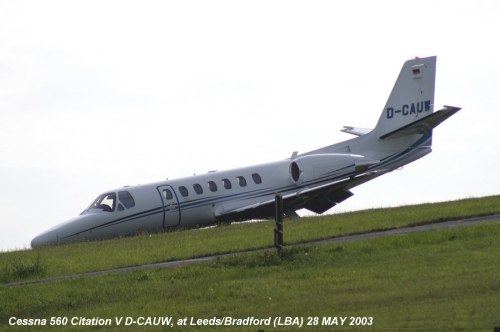|
See
article below ref ATA accident at Chicago (Midway).
(and the attached article). It
doesn't make it clear in the article but reverted rubber skidding can occur
on dry
heavy rubber deposits. And those
deposits tend to cancel out the runway's texture (grooving).... and give
a lesser braking efficiency. However
wet runways are of course the most hazardous and I think that you will find
that manufacturers do not factor in contamination of any sort into their
stopping (or rejected take-off) performance ratings. The best
you might get is “braking reported good/fair/poor”….if you
were to ask.
Now back
to the earlier story of ATC having the
authority to send an a/c around off a badly judged approach.
Chicago's
Midway is an accident in progress.
If you look below you'll see that 31C has very heavy rubber deposits.
That decreases stoppability in wet weather by a large amount (hydroplaning
and reverted rubber aquaplaning (i.e.skidding)).
Of course landing
"well in" was the cause here - but that's precisely
the circumstance where the experienced ATCO should send the airplane around
(once he's over the threshold and looking mighty shaky).
There is no virtue in the Anchorage
style of passive controlling ("This is going to get ugly" ). What is the use of that attitude/approach to
safety?
And
when you look at the photo below (and those heavy rubber deposits) just
reflect upon the likelihood of a real catastrophe resulting from a take-off
abort at V1.
Having autobrakes doesn't make reverted rubber hydroplaning any less likely.
Perhaps it should become the new Meigs Field.
Mayor Daley could do that overnight with a wave of his magic bulldozer.
This
757-200 crew may have been carrying a thrust
reverser unserviceability (but that’s not been confirmed).
link Rubber Deposits

link The Value of "Distance
to Run" Marker Boards
|
Extract The
commander believed that there was sufficient runway in which to stop
even after the long touchdown. The actual landing roll calculated from
the FDR data suggests that the aircraft stopped in the expected distance
of 2,700 feet. In fact, the deceleration during the final part of the
roll was relatively high as the aircraft went onto the soft grass
otherwise the landing distance would have been longer. This and the
increase in longitudinal 'g' confirm that braking did not begin at the
time of touchdown but occurred later, at around the time the commander
was able see the end of the runway. Had he applied full brake pressure
immediately on touchdown, the aircraft should have stopped on the paved
surface but probably beyond the declared landing distance.
In most cases, in daylight, once the touchdown zone of a runway is
behind an aircraft there is no direct indication to a pilot what
remaining length is available other than what he can see ahead.
However, the touchdown zone markings for the opposite runway, normally
at around 1,000 feet remaining, can sometimes be an indication. In
recognition of this problem, some aerodromes have adopted a system of
marker boards displaying distance to go information. In the absence of
marker boards and any familiarity with the airfield environment, a pilot
may not be able to form a good judgement of remaining distance once past
the touchdown zone, particularly where, as in this case, there is a
significant slope. For this reason, even when there may be excess
landing distance available, a landing at the touchdown zone is
desirable. |
KMDW runway 31C:
Dimensions: 6522 x 150 ft. / 1988 x 46 m
Surface: concrete/grooved, in good condition
Weight limitations: Single wheel: 95000 lbs
Double wheel: 165000 lbs
Double tandem: 250000 lbs
47 ft. road, 200 ft. from runway, 225 ft. left of centerline
APCH RATIO 20:1 AT DSPLCD THR. STREET LGT 650 FT FROM DSPLCD THR 500 FT R.
CLOSE-IN OBST ALL RYS EXCEPT RY 13R/31L TOO NUMEROUS TO ITEMIZE.
4-box VASI on left (3.00 degrees glide path)
Latitude: 41-46.75438N
Longitude: 087-44.62430W
Elevation: 611.7 ft.
|
|
Airplane mishap at Chicago's Midway Airport being blamed on pilot error
Published
September 11, 2003
Pilot error caused an ATA Airlines plane to overshoot a
runway at Midway Airport
Monday and strike a jet-blast deflector, according to a preliminary
investigation by the airline released Wednesday.
The unidentified pilot was suspended with pay in accordance with the
airline's contract with the Air Line Pilots Association, said ATA
spokeswoman Julie Fletcher.
She
said the pilot tested negative for alcohol. Results from drug testing
were still pending.
The Boeing 757 overshot the landing zone on Midway's longest runway on
the flight from Ft.
Lauderdale, rolled to the end
of the 6,522-foot airstrip and its nose penetrated one panel of the
red-and-white checkered blast fence.
No injuries were reported among the 107 passengers and seven crew members.
Some passengers aboard the plane said it appeared the plane was almost
halfway down the runway before the wheels touched down.
Depending on aircraft weight and wind conditions, a Boeing 757 should
land within the first 25 percent of a 6,500-foot runway to ensure there
is adequate room to stop in case the brakes or thrust-reversers
malfunction.
|
|
|

